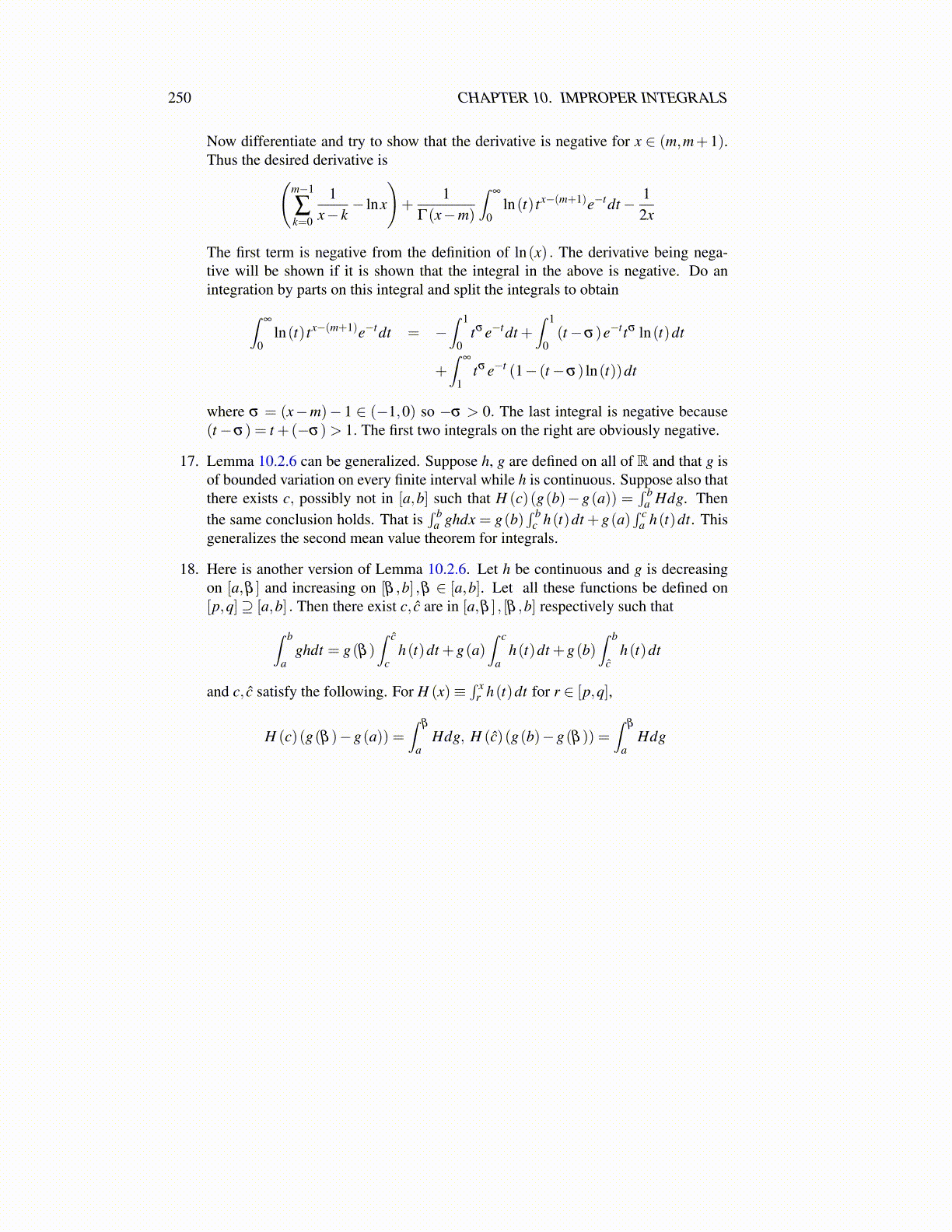
250 CHAPTER 11. FUNCTIONS OF ONE COMPLEX VARIABLE
have the same orientation and γ ∼ γ̂ if and only if γ̂−1 ◦ γ is increasing. Then ∼ is
easily seen to be an equivalence relation and γ∗ together with all C1 parametrizationshaving the same orientation is called an oriented C1 curve.
4. The curve is called smooth if it has a C1 parametrization γ : [a,b]→ C such thatγ ′ (t) ̸= 0 for all t ∈ (a,b).
To see that ∼ is an equivalence relation say γ1 ∼ γ2 and γ2 ∼ γ3. Then γ−12 ◦ γ1 is
increasing and also γ−13 ◦ γ2 is increasing. Hence
(γ−13 ◦ γ2
)◦(γ−12 ◦ γ1
)= γ
−13 ◦ γ1 is in-
creasing. Thus ∼ is transitive. It is symmetric because a function is increasing on aninterval is equivalent to its inverse being increasing. Clearly γ ∼ γ .
Definition 11.1.3 An ordered partition of [p,q] will be a sequence of intermediatepoints, α0,α1, · · · ,αn, p = α0 < α1 < · · · < αn = q. A set of points γ∗ ⊆ C is an ori-ented piecewise smooth curve means there is a parametrization γ which is one to one andcontinuous on [p,q), such that γ restricted to (α i−1,α i) is C1, and γ ′ (t) ̸= 0 on this openinterval, and the right and left derivatives exist at the endpoints. Thus γ ([α i−1,α i]) is asmooth curve.
Here is a picture of such a thing. The idea is that it has finitely many pointy places.
The above is fussy and technical, We can ignore it because it is included in the case ofC1 curves. Suppose you have a < b < c and γ ′1 (t) ̸= 0 on (a,b) ,γ ′2 (t) ̸= 0 on (b,c) butγ ′1 (b) ̸= γ ′2 (b) although γ1 = γ2 at b. Then consider
γ̂ (t) =
γ1
(b+(t−b)3 1
(b−a)2
), t ∈ [a,b]
γ2
(b+(t−b)3 1
(c−b)2
), t ∈ [b,c]
Then γ̂ (t) moves from γ1 (a) to γ̂ (b) in the same direction as γ1 and γ2 and is differentiableon all of (a,c) although γ̂ ′ (b) = 0. Thus this piecewise smooth curve can be expressed asa C1 curve, not smooth because of the vanishing of the derivative at b. If you wanted, youcould define and draw the same conclusions for a piecewise smooth C2 curve. You wouldsimply feature (t−b)5 1
(b−a)4 ,(t−b)5 1(c−b)4 instead. This shows that a piecewise smooth
curve, has a C1 parametrization which gives the same oriented piecewise smooth curve, soone might as well just consider curves which have C1 parametrizations without insistingthey are smooth and forget about the fussy details.
Definition 11.1.4 A piecewise smooth curve γ∗ is an oriented C1 curve having aC1 parametrization γ : [a,b] → γ∗ such that there exists an ordered partition of [a,b] ,α0,α1, · · · ,αn for which γ ′ (t) ̸= 0 on (α i−1,α i) and right and left derivatives exist at theendpoints of this interval. More generally, a C1 curve is one which has a C1 parametriza-tion as above. Also define−γ∗ as follows. If γ∗ = γ ([a,b]) then let η : [a,b]→ γ∗ be definedby η (t) ≡ γ (a+b− t). This amounts to going over γ∗ in the opposite direction. Then η
will be a parametrization for −γ∗.
Also, I will define the contour integral for a C1 curve as follows: